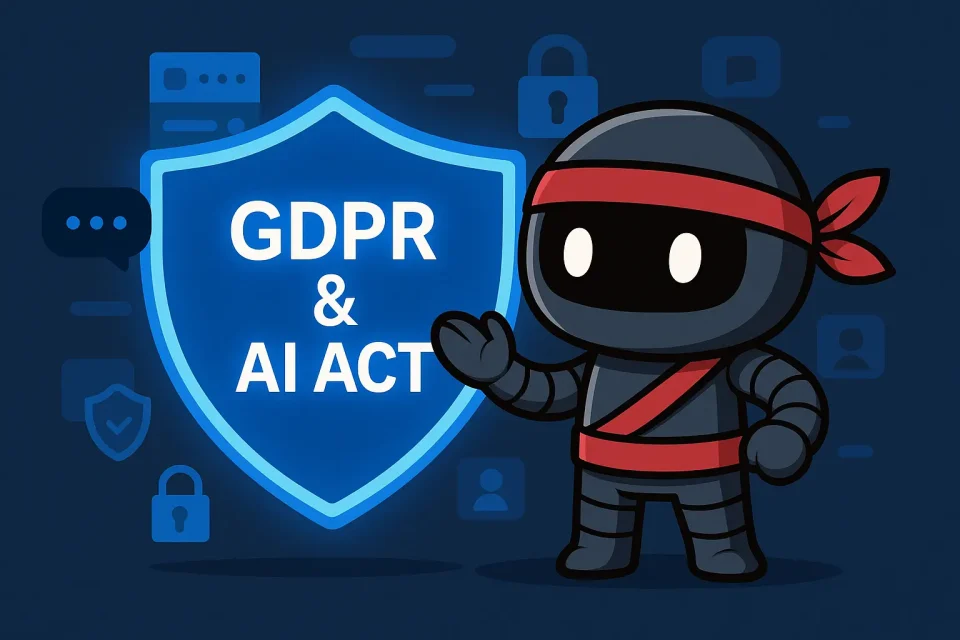You’ve met them — the chatbots that promise to “revolutionize customer engagement” and end up wasting your time with robotic answers.
It’s the same story every time: big words, bigger expectations, and a cold, mechanical conversation that makes you miss the human touch.
Here’s the twist most people miss: the problem isn’t the tech. It’s the mindset.
Building a great conversational AI isn’t about fancy algorithms or bragging about “GPT-something.” It’s about design, empathy, and understanding how humans actually talk.
So let’s strip away the buzzwords and look at four uncomfortable truths that will flip your idea of chatbot success upside down.
1. Your Website Is a Store Without a Salesperson
Picture this: your website is a beautiful store — shelves full of products, a clean design, and a big “Contact Us” form at the back.
Now imagine customers walking in… and finding no one there. No greeting. No help. Just silence.
That’s what happens when your website has no conversational layer.
Visitors wander around, maybe click a button or two, and quietly leave.
Traditional contact forms? They’re like asking your customers to write a note and hope someone calls them back. Spoiler: they won’t wait.
The truth is brutal: your chatbot isn’t a tech add-on — it’s your only salesperson working 24/7.
Its mission isn’t to look smart; it’s to engage, qualify, and convert in real time.
When done right, it transforms your “digital storefront” from static to alive.
And the data backs it up — businesses replacing forms with real-time conversations consistently see higher conversion rates, shorter sales cycles, and happier prospects.
Action: stop treating your bot like a gadget. It’s a frontline teammate. Train it, test it, and make it the host your visitors deserve.
2. Personality Beats Platform
Here’s a secret nobody selling chatbot software wants you to know: users don’t care about your platform’s NLP accuracy score.
They care about how it feels to talk to your bot.
A chatbot with no personality is like a salesperson with no smile — technically functional, emotionally dead.
The best bots don’t just work; they connect.
Their names, tone, and visual cues make users feel like they’re talking to a real brand — not an API wrapped in polite syntax.
Think of Kip, the penguin-branded bot that used emojis and stickers to create emotional context. Or consider Statsbot vs Lyft: one’s purely functional; the other carries an entire brand ethos in its name.
Your bot doesn’t need jokes or fake friendliness — it needs consistency.
A tone that matches your brand and adjusts to context.
If someone’s late for a meeting, sarcasm isn’t funny. If someone’s exploring your services, warmth is everything.
And yes — write your dialogues like you’d write your web copy. You wouldn’t let an intern write your homepage, so why let one script your chatbot?
Action: before picking your platform, define your bot’s personality archetype. Is it a guide, a sidekick, or a strategist?
Because the truth is: personality drives experience — and experience drives conversion.
3. Design for Failure, Not Perfection
Most chatbot projects die in the “happy path.”
That’s the ideal route where users type exactly what you expected, in perfect grammar, and the bot responds flawlessly.
Too bad no real conversation ever goes that way.
Humans are unpredictable. They mistype, go off-topic, and ask weird questions.
If your bot can’t handle that chaos gracefully, you’ve already lost.
The real test of intelligence isn’t how your bot works when things go right — it’s how it behaves when they don’t.
A well-designed bot handles confusion with empathy, not error codes.
Instead of “Invalid input,” it says:
“Hmm, I didn’t catch that — want to try again or talk to a human teammate?”
That’s emotional intelligence.
Add guardrails, not walls: track misunderstandings, reprompt smartly, and after two failed attempts, escalate to a human.
This isn’t weakness — it’s user-centric design.
As design legend Don Norman said:
“When a person says something you don’t understand, you don’t beep. You ask questions to clarify.”
Action: test your bot’s failure paths more than its perfect ones.
That’s where real trust is built — and where mediocre bots become reliable digital assistants.
4. Stop Trying to Teach It Everything
Here’s a myth that’s wasting thousands of development hours:
“We just need to train the bot on everything.”
That’s like trying to memorize Wikipedia before having a conversation. It’s pointless.
Great conversational AI doesn’t know everything — it knows what matters.
Focus on the short head: the handful of high-volume questions that drive 80% of user interactions.
Handle those with perfectly tuned “intents.”
For the rest — the long tail of rare or random questions — use search-based retrieval or RAG (Retrieval-Augmented Generation).
That way, your bot dynamically fetches information instead of pretending to have memorized it all.
This hybrid approach keeps your system lean, scalable, and human-sounding.
Because no one likes a know-it-all — especially one that keeps getting things wrong.
Action: simplify your knowledge strategy. Focus on value, not volume.
Your chatbot shouldn’t be omniscient; it should be useful.
The Human at the Heart of the Machine
So there you have it — four myths, four truths that flip the script on conversational AI.
Forget the hype, forget the buzzwords. The future of chatbots isn’t about mimicking humans — it’s about understanding them.
When you design for empathy, personality, and purpose, your chatbot stops being an automation tool and becomes a genuine digital teammate.
And if you’re ready to build one that actually talks like a human and converts like a pro —
👉 Book a call with NinjaiBot and let’s make your AI conversation feel human again.


